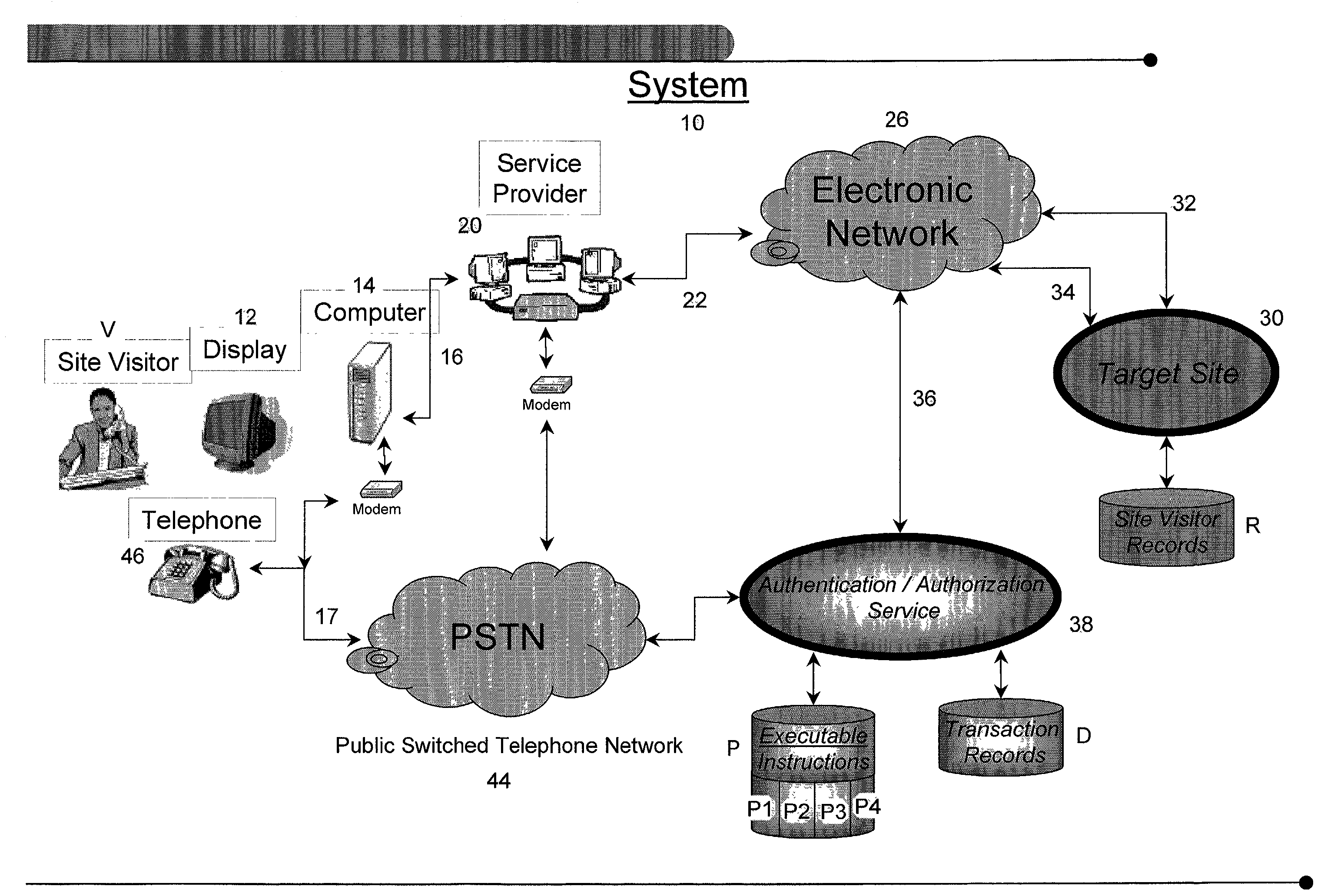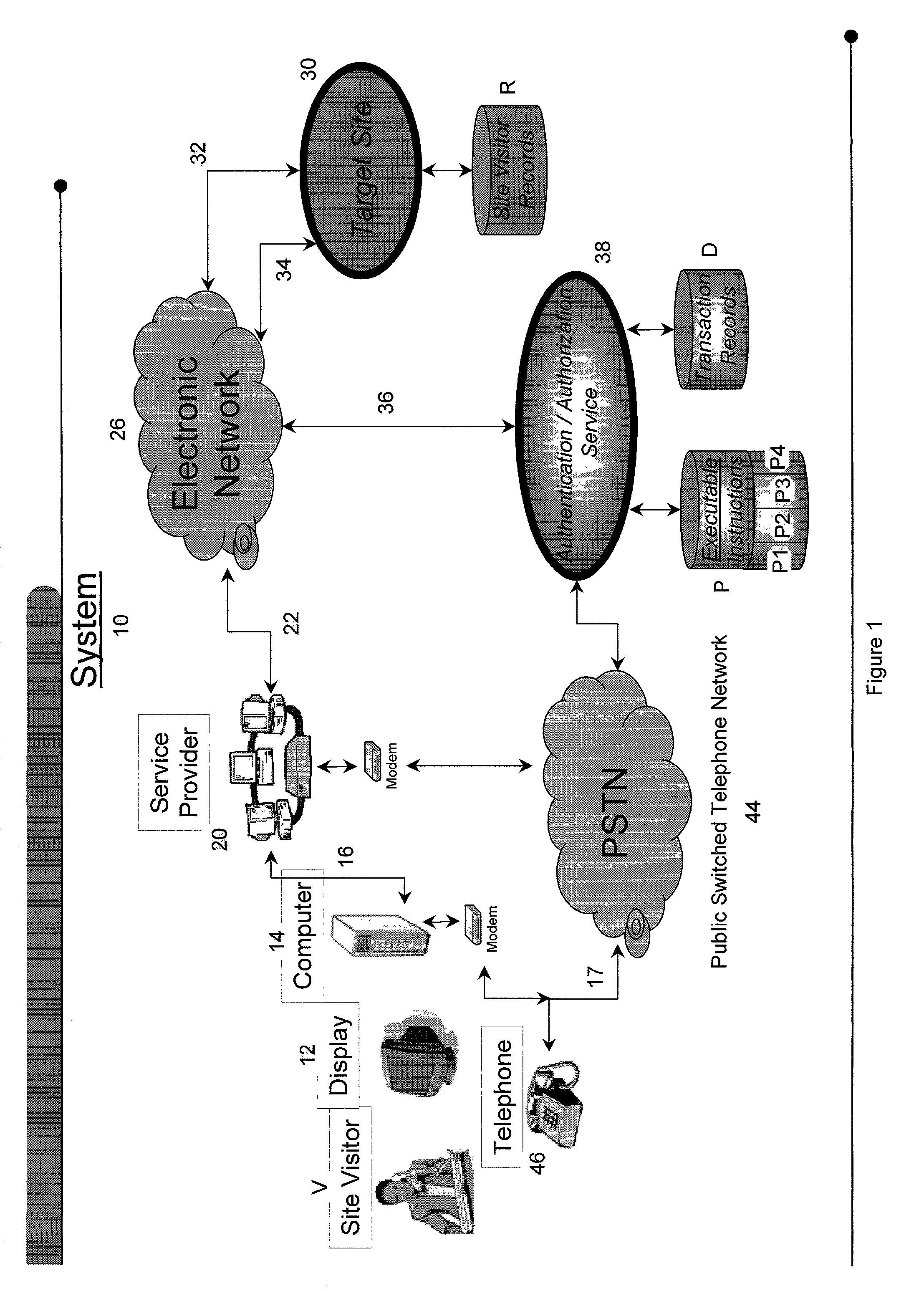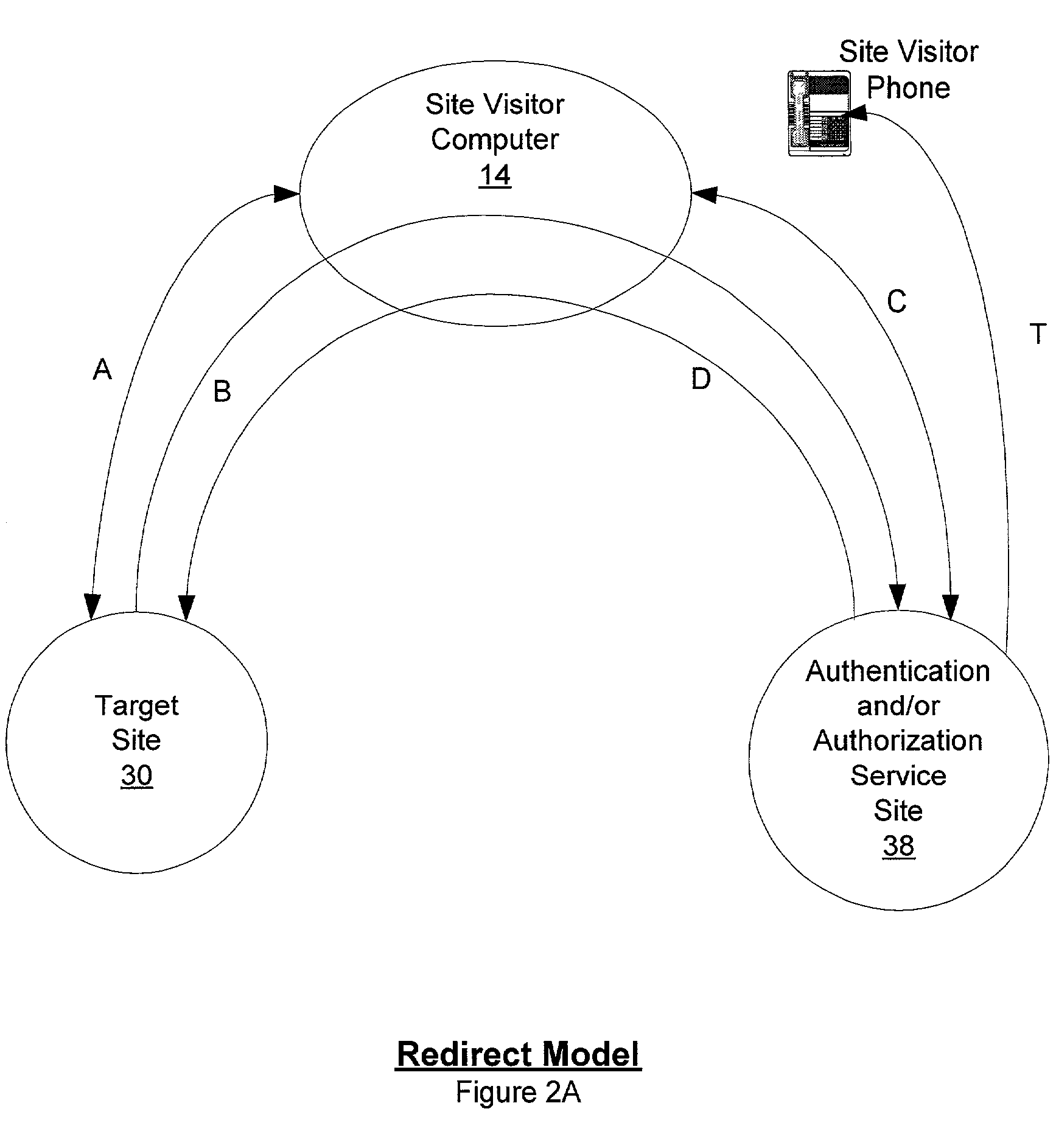Use of public switched telephone network for authentication and authorization in on-line transactions
a public switched telephone network and authentication and authorization technology, applied in the field of automatic online authentication and authorization systems, can solve the problems of identity theft, bank really has no assurance of the true identity of the entity, and the lack of direct person-to-person contact has created its own s
- Summary
- Abstract
- Description
- Claims
- Application Information
AI Technical Summary
Problems solved by technology
Method used
Image
Examples
Embodiment Construction
[0034]While this invention is susceptible of embodiment in many different forms, there are shown in the drawing and will be described herein in detail specific embodiments thereof with the understanding that the present disclosure is to be considered as an exemplification of the principles of the invention and is not intended to limit the invention to the specific embodiments illustrated.
[0035]Embodiments of the present system and method exhibit characteristics which include:[0036]1. Use of two communications channels, different at least in part. The process is facilitated where the user has access to a telephone (for example, a device identified on one of the channels, such as a voice channel). This can provide a basic form of identity verification;[0037]2. Ability to input to the system over one of the channels a random, real-time generated confirmation number delivered over the other channel is used as a verification of the individual's access to both channels. Speech recognition...
PUM
 Login to View More
Login to View More Abstract
Description
Claims
Application Information
 Login to View More
Login to View More - R&D
- Intellectual Property
- Life Sciences
- Materials
- Tech Scout
- Unparalleled Data Quality
- Higher Quality Content
- 60% Fewer Hallucinations
Browse by: Latest US Patents, China's latest patents, Technical Efficacy Thesaurus, Application Domain, Technology Topic, Popular Technical Reports.
© 2025 PatSnap. All rights reserved.Legal|Privacy policy|Modern Slavery Act Transparency Statement|Sitemap|About US| Contact US: help@patsnap.com



